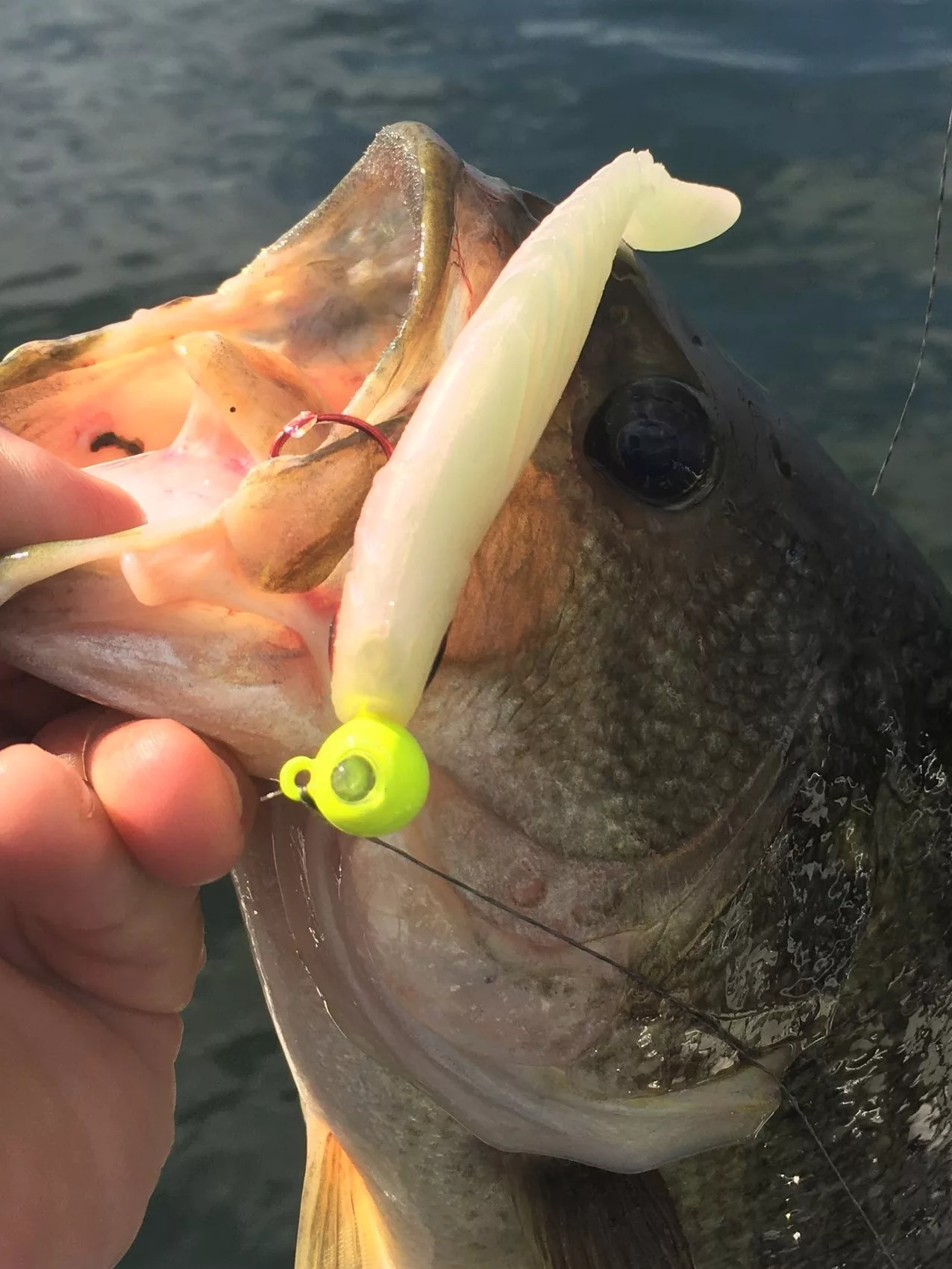
Working Wonders! Adding action to lures like swimbaits that already have some motion makes them look more alive and more vulnerable to nearby predators. Experiment with different twitches, sweeps and pauses to get the most out of every offering. Simonson Photo.
By Nick Simonson
Save for the always aggressive northern pike, a straight retrieve on a lure rarely sets off a fish. Even trolling a crankbait or reeling one in, a little jarring motion or the banging of rocks, timber or other obstruction in the substrate gives off a wild vibe that triggers a reaction from following fish. The name of a “jig” along suggests what you’re supposed to do with it – make it dance! Especially as summer settles in across the region and fish feed in earnest heading toward the cooler water season (I know, it’s best if you don’t think about it) adding a little more action to any lure can help trigger more bites. What follows are a few suggestions to get the most motion into your lures to help put more fish in the boat.
Twitch Livestream
The simple twitch or snap of the rod tip in even the slightest amount can provide enough action for any lure, be it a plastic dressed jig, a bass worm, or a retrieved jerkbait or crankbait. This slight motion helps make the lure look like it’s just an edible creature that’s just a little bit wounded to draw the attention of a nearby predator. Like the wolves on the weakest member of an elk herd, big fish find the stragglers in the baitfish school by similar cues. The motion need not be large or a super long sweep, either. Simply snapping the rod tip to send out that impression that something is wrong with the whatever-it-is moving through the water, gives the impression that it is an easy meal. Keep this in mind when casting spoons, working jigs, or maneuvering plastic offerings through structure; a little snap goes a long way in setting fish off.
Head Banging
Similarly, working lures in and around structure that holds summer fish is a great way to catch their attention, even more so if you can bang the bill of a crankbait off a rock or a concrete slab, or skitter a crayfish imitator off a rock or a sunken stump and let it freefall down to the bottom once again. Having lures make contact with and around structure, and have the obstructions adjust their trajectory can provide the extra uniqueness to your offering that predators just can’t resist, setting up an reaction strike and the ensuing hookset. Whether trolled over rocky substrate, or cast through a boulder field, careening crankbaits off of stones of any sort helps throw this erratic motion into the mix, and a lot of strikes come just after contact.
The Pause
Finally, sometimes the best motion is no motion at all. For suspending crankbaits that have a slight rise to them, or the slow-falling wiggle of soft plastic sticks, sometimes just letting lures hang there after a few quick darts or pulls is what triggers the aggression of bass, muskies, walleyes, and other predator species. It’s almost as if the fish think they’d better snatch up a quick snack while they can, before it gets a better idea and starts moving again. Work pauses into those aggressive cadences and give fish a quick second to make their decision to strike. Sometimes doing nothing can be the best tactic in triggering a hit, especially in slower times or when fish are short-striking or just following lures into the boat.
Working these tactics along with varying depths and speeds at which lures are retrieved can help put together the daily and seasonal puzzles presented by favorite predator species. Learning the cadence and even the non-motion of lures that set fish off is a fun experience, and finding the pattern that pays off the best can incorporate all three of these options and more. Add a few twitches to get the attention of fish, bang your baits into available structure to change their path, and perhaps add a pause or two to the pattern. Go through the motions and put it all together this summer and you’re more than likely to find increased success for whatever predator species you pursue…in our outdoors.
